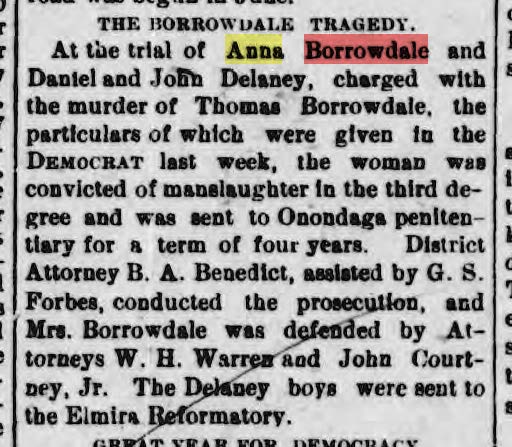Location #1: Glenwood Cemetery at 31 North Main Street, Homer, NY
(42.638730, -76.177790)
”My aunt, Mrs. Manley Terrell, told me once that she had told him God would punish him for doing that. She thought God did, for he was killed not long afterward. The weapon used in the killing was my mother’s butter ladle, which had been left in the house when they packed and left for Iowa.” Handwritten letter from Todd family member received by Cortland County Historical Society
Amos Todd and his family were the first pioneers to settle in Cortland County. In 1800 they purchased lot 42, 238 acres of wild land in Homer. Through grit, heartache, and sheer determination, Amos Todd made this farmstead his home until the day of his death, on October 3, 1830.
During these tumultuous years, as dear family members’ lives were lost, they were buried on the family farm. Amos’ son Jason (1806-unknown) and daughter Lydia (1800-1823) would both die before him, along with Peninah Todd (July 5, 1827), 13-year-old Hanna E. Todd (May 5, 1829), and Sarah Todd, age 66, (dates unknown) were laid to rest, just steps from the family home. However, unlike their elder, Amos Todd, they would not rest in peace.
Location #2: NYS Historical Marker at New York 90, Homer, NY
(42.634460, -76.188880)
After Amos Todd’s passing, the family homestead was inherited by his son George, who managed it until his pioneering spirit called him to move his family back to Iowa in 1869. The first person to purchase the homestead, Almus Stebbins, tragically died less than a year after its purchases. The first ominous sign.
Thomas Borrowdale and his wife Anna were the next inhabitants of the former Todd homestead. Thomas was known to be an avaricious man, prone to drink and violence. In a cruel act of greed, Thomas plowed over the Amos family cemetery to create more fields for his grain. He dragged each of the tombstones to the root cellar. Laying them face up, he turned them into stairs, literally walking on the last vestiges of dignity they had in death. All for the sake of money.
His wife Anna, fed up with his drunken abuse and perhaps moved by restless spirits, plotted to murder him. She and her brothers took him out for a day of drinking. Upon returning home, they attacked him, Anna striking the final, killing blow. Her weapon, the butter packer left behind by Ms. Amos when she moved to back to Iowa. Anna would be sentenced to four years in prison. When she was released and attempted to make a claim on the farm, it was discovered that her marriage to Thomas had been illegal, as she was still married to her previous husband. Because of this, she lost her claim, and the farm found itself searching for new owners yet again.
More than 100 years after his death, Amos’ granddaughter, Grace (Todd) Birdsall returned from Iowa to pay her respects at the Todd homestead cemetery. It was a dreary day in April 1933, and she could not predict the horror she would discover. The Caughey family, who now owned the farm, were away, so Grace headed out to the back of the property alone in search of the family plot. Despite her desperate searching, she could not locate it. Upon returning to the farmhouse, she noticed something peculiar about the cellar stairs. There lay her family’s tombstones, most half warn away with use, her family’s graves completely desecrated. She transcribed what few could still be read and petitioned to have them removed and sent to Iowa, where they could be honored. It was later reported while the cellar steps had indeed been replaced, tragically the tombstone had been lost.
No one knows where the tombstones have gone. The gravesites lie lost to time, the Amos ancestors plowed over for grain.



